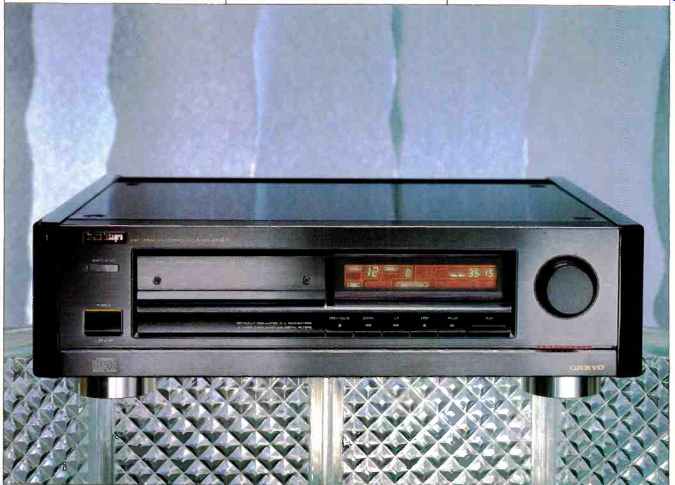
MANUFACTURER'S SPECIFICATIONS:
Frequency Response: 2 Hz to 20 kHz (no tolerance given).
Sampling Frequency: 352.8 kHz (8x oversampling).
THD: 0.0015% at 1 kHz.
Dynamic Range: 103 dB. S/N: 110 dB.
Channel Separation: 103 dB at 1 kHz.
Number of Programmable Selections: 16.
Output Level: 2.0 V rms.
Power Requirements: 120 V a.c., 60 Hz, 24 watts.
Dimensions: 18 3/4 in. W x 5 9/16 in. H x 16 13/16 in. D (47.7 cm x 14.2 cm x 42.7 cm).
Weight: 59 1/2 lbs. (27 kg).
Price: $2,500.
Company Address: 200 Williams Dr., Ramsey, N.J. 07446, USA.
When the double-cartoned Onkyo DX-G10 first arrived at my laboratory, I was sure it was either a power amplifier or a high-powered integrated amp. After all, who would have suspected that a CD player would weigh nearly 60 pounds!!? But after carefully unpacking this heavyweight, it was soon obvious that this was, indeed, a Compact Disc player. It gave me the impression, even before I tested it or listened to it, that Onkyo's management must have said to its engineers, "Forget about cost! Just design the finest, most rugged, and technically sophisticated CD player you can. Let us worry about whether or not we can sell any at a $2,000 + price." In large measure, those engineers have succeeded.
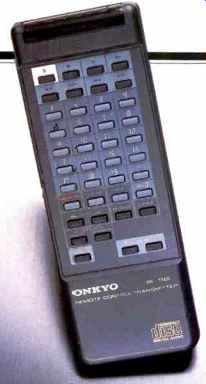
Consider, first, this unit's extremely heavy weight. The DX-G10 is housed in an extremely rigid, graphite-reinforced steel chassis. The laser pickup mechanism and all modular circuit blocks are firmly anchored to this foundation. Onkyo maintains that this arrangement not only isolates the circuitry and mechanisms from any outside or external vibrations, but that it absorbs internally generated vibrations from the disc-drive motor, power transformers, and other sources.
The laser pickup assembly uses a total of four motors, each optimized for its specific task. The most critical of these, according to Onkyo, is the pickup drive motor. Here, the DX-G10 uses a linear motor capable of high-speed access.
As for circuit innovations, this is not the first time Onkyo has used a true linear 18-bit D/A conversion system, but in this unit, they have combined it with some pretty fancy optical circuitry which they call "Opto-Drive." It serves as the signal-current source for the converters, substituting an LED and phototransistor for the more conventional zener-diode current source. The phototransistor's output, says Onkyo, is far more stable than a zener's, and the optical coupling reduces the amount of interference reaching the D/A converters. To eliminate phase differences between stereo channels, two ladder-network D/A converters are used.
Another feature, which Onkyo calls "Opto-Coupling," involves electrical isolation of the digital and analog circuitry through the use of fiber optics. A total of five discrete optical fibers form a sort of "light bridge" or data link between the digital and analog sections of the player. The analog circuit blocks are fully shielded against any high-frequency interference from digital pulses. Just how much all of these internal refinements contribute to the ultimate sound quality of the player is something each listener will have to determine for himself, but I'll have more to say about it later on.
The unit comes with a full-function remote control. In addition to fixed and variable analog outputs, the DX-G10 has both optical and coaxial digital outputs, and a now-standard optical cable is supplied to hook up the digital output directly to an optical digital input on a stand-alone D/A converter or on one of those new amps which have built-in converters. (In view of the details lavished upon the Onkyo's built-in D/A conversion system, I wonder why anyone would go to that additional expense.) A "Shuttle Search" knob is used for fast-forward or reverse seeking of a specific moment of music. Various repeat-play modes are available, including A-to-B. Index points within a track may be directly accessed, and programmed play of up to 16 selections can be memorized by the player's microprocessor. You can even instruct the DX-G10 to begin play from a specific point (in minutes and seconds) within a given track by simply punching in the track number and the time.
Control Layout
Despite its rather massive appearance, the front panel of the DX-G10 is not terribly cluttered. That's because only the most used controls and pushbuttons are visible when the full-width drop-down door, along the lower edge of the panel, is in its closed position. A power switch and indicator are at the extreme left, adjacent to the disc tray. To the right of the tray is the display area; it shows track and index numbers, various time readouts, and other status indications. Pushbuttons beneath the display include "Open/ Close" for the disc tray, track advance and reverse, stop, pause, and play. The large "Shuttle Search" knob at the right of the panel resembles a massive volume control, but when turned to the right, high-speed search in a forward direction is initiated; turning the knob to the left obtains the reverse direction. Search speed is determined by how far the user twists this spring-loaded knob in a given direction.
Opening the hinged door along the lower edge of the panel reveals the headphone jack (under the shuttle knob)
and a number of control buttons. An "Invert Phase" button is provided for those who are sensitive to polarity reversals in the recording process. There are buttons for specifying a time within a track at which play will begin, for the various modes of repeat play, for index search, and for time-display mode (elapsed or remaining time within a track or total remaining time on the disc). There is even a "Dimmer" button that controls the display area's intensity. Also behind this door are the programming buttons, including the 10 number keys, "Memory," and "Clear." Larger buttons to the right control the volume level at the headphone and variable output jacks. Since the DX-G10 also has fixed-level outputs, its headphone level can be set without affecting output to the main system or a tape deck.
In addition to the variable and fixed analog output terminals, the rear panel has coaxial and optical digital output terminals with a companion slide switch that activates these outputs when needed. The optical output terminal accepts one end of the supplied optical cable, and is of the type that seems to have become the de facto standard.
Measurements
The frequency response of both analog outputs is plotted in Fig. 1. While roll-off at 20 kHz was no more than 0.2 dB for the left channel and 0.1 dB for the right, the right channel exhibited a slight, 0.2-dB roll-off at 20 Hz as well. I can't imagine why this should have been so and suspect that this unusual effect may be the result of an out-of-tolerance component in the analog output stage of my sample. In any event, an imbalance of 0.2 dB between stereo channels at 20 Hz is not something to be very seriously concerned about. In Fig. 2, the plot of the left-channel frequency response is presented along with a plot of interchannel phase difference, which was negligible at all audio frequencies.
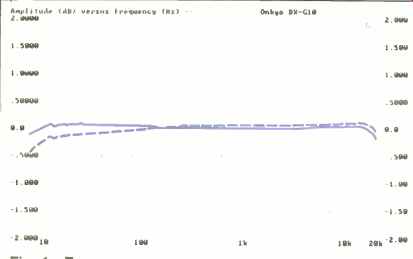
Fig. 1-Frequency response. In this and all subsequent figures, unless otherwise
noted, left channel is solid curve and right channel is dashed.
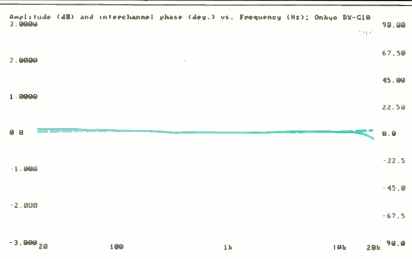
Fig. 2-Comparison of interchannel phase difference (dashed curve) and amplitude
response (solid curve). Phase, in degrees, can be read from right-hand scale.
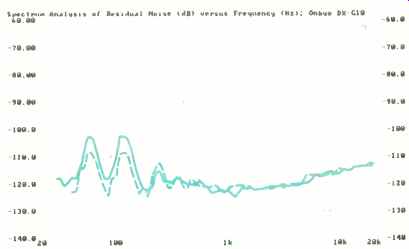
Fig. 3-Residual noise vs. frequency for "quiet" track of CD-1
test disc.
Although there are noise peaks at the power-line frequency and its harmonics, they are very low in amplitude.
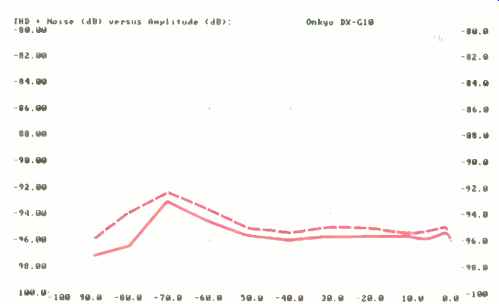
Fig. 4-THD + N vs. signal level.
A-weighted S/N ratio for this player measured -106.7 dB for the left channel and an almost identical-106.66 dB for the right. Figure 3 is a spectrum analysis of residual noise when playing the "no-signal" track of my CD-1 test disc through the Onkyo unit. As I have explained in previous reports, this graph, as well as the figures just cited for S/N ratio, have nothing to do with the digital performance characteristics of the player; rather, they tell us something about the noise performance of its analog section. Interestingly, despite the extent to which this unit's power-supply section is shielded from its analog audio stages, you can still detect a minute amount of 60-Hz component and its harmonics in Fig. 3. The 60-Hz fundamental and its second harmonic are, however, more than 103 dB below maximum level.
Figure 4 is a plot of THD + N (expressed in dB below maximum output) versus recorded level. Ideally, this should be a straight line. Both channels exhibited a slight rise in THD + N at around 70 dB below maximum record level.
Figure 5 shows how THD + N varied as a function of frequency, for signals recorded at maximum level. Distortion and noise at 1 kHz were almost identical in both channels -- 0.0018% for the left channel and 0.001% for the right; the results varied only very slightly across the audio frequency spectrum. Rarely have I seen a CD player that did not exhibit a marked rise in THD at 20 kHz, but the Onkyo DX-G10 is one of those rare units. Figure 6 helps to explain why.
It is a spectrum analysis of the player's output for a maximum-amplitude test tone at 20 kHz. There is not the slightest evidence of any beat tones, either within the audio band or above it.
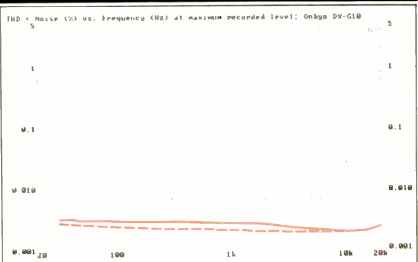
Fig. 5-THD + N vs. frequency, for signal level of 0 dB. The rise at 20 kHz,
common in CD players, is minuscule.
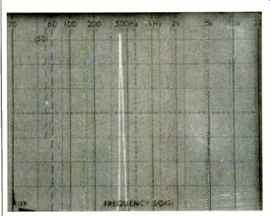
Fig. 6-Spectrum analysis of 20-kHz signal; note the absence of "beat" components.
Sweep is linear, from 0 Hz to 50 kHz.

Fig. 7-Interchannel separation.
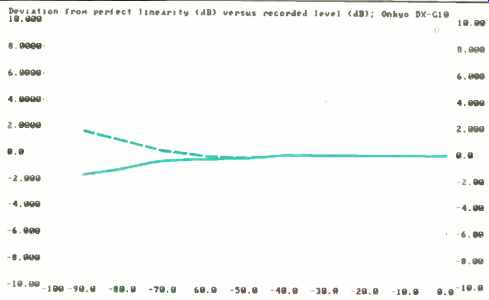
Fig. 8-Deviation from perfect linearity for an undithered, 1-kHz signal
at levels from 0 to-90 dB. Linearity was nearly perfect, with maximum deviation
not exceeding 2.0 dB in either channel, even at -90 dB.

Fig. 9-Linearity deviation for a dithered, 1-kHz signal at levels from -70
to-100 dB.
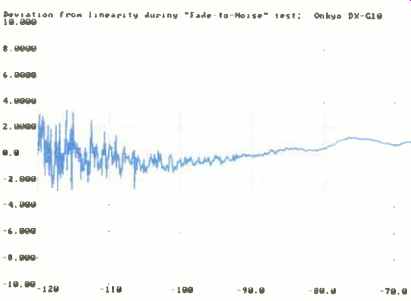
Fig. 10-Linearity deviation for "fade-to-noise" test of dynamic
range, using a dithered signal. The DX-G10 tracked the level changes in this
test extremely well.
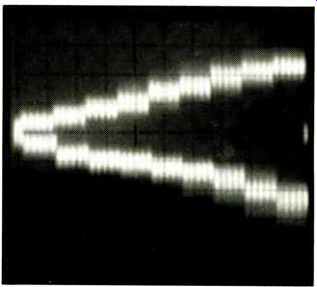
Fig. 11-The monotonicity test also shows this player's excellent low-level
linearity.
Separation between channels was excellent (Fig. 7). Left-to-right channel separation was 111 dB at 1 kHz and 92 dB at 10 kHz, while right-to-left separation was 104.5 dB at 1 kHz and 88.5 dB at 10 kHz. Figure 8 shows a test of linearity, using an undithered, 1-kHz signal at levels ranging from 0 (maximum recorded level) to -90 dB. I noted that both channels began to depart from linearity very slightly (and in opposite directions) below-40 dB. Although their nonlinearity began to increase more rapidly below-70 dB, it was less than 2.0 dB in either channel, even at a level of -90 dB. When I used a low-level, dithered test signal, as shown in Fig. 9, left-channel linearity was nearly perfect-off by no more than about 1.5 dB at-100 dB below maximum recorded level--while right-channel output exhibited a maximum deviation from linearity of only slightly more than 2.0 dB at -100 dB. The fade-to-noise test was conducted for the left channel only (Fig. 10), and the results fully confirm the earlier conclusion concerning the excellent linearity exhibited by this player. Discrete signals could easily be distinguished from noise, even at levels as low as 110 dB below maximum output.
EIAJ dynamic range measured 93.8 dB for the left channel and 89.7 dB for the right. The monotonicity test signals on the CD-1 disc further verified the DX-G10's excellent low-level linearity (Fig. 11).
I made a few other spot performance measurements before I began my listening tests. SMPTE-IM distortion, at maximum signal level, was 0.00528% on the left channel and 0.00975% for the opposite channel. Frequency accuracy, a measure of the player's master-clock accuracy, was within 0.0159% of perfect. Figure 12 shows how the Onkyo reproduced a 1-kHz square wave, and Fig. 13 depicts a unit pulse as reproduced by the player. It confirms that this unit introduces no signal polarity inversion, unless one chooses to invert polarity by activating the button provided for this.
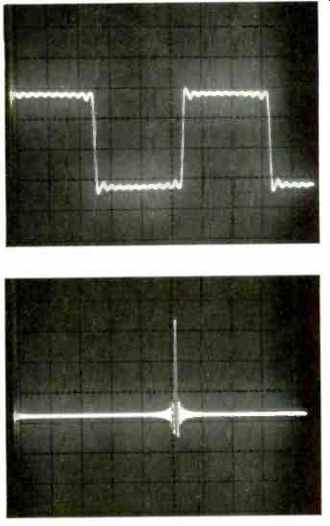
(top) Fig. 12--Reproduction of 1-kHz square wave. (above) Fig. 13--Single-pulse
test.
Use and Listening Tests
For my listening tests, I hooked up the DX-G10 directly to a Hafler XL600 power amplifier (reviewed last month) that had been adjusted for minimum distortion while it was connected to my reference Infinity RS 9 Kappa speakers. In this arrangement, since no preamp was used, I had to connect the CD player's variable outputs to the amplifier. At the time I tested the Onkyo unit, I did not have on hand an amp or preamp with an optical or coaxial digital input, so I was not able to use this player's digital output terminals. Had I been able to do so, however, I would really have been judging only a portion of the Onkyo along with the D/A converter circuit of some other piece of equipment.
Among the CDs I listened to were a pair that I had used in evaluating the Haller amp, namely a disc containing very dynamic classical overtures (Pro Arte's Light Cavalry, CDD 402) and a clarinet and piano recording (Delos' Brahms/ Schumann Soiree, D/CD 3025). Both discs were digitally mastered and recorded and bear the now-familiar SPARS DDD designation. I was very pleased with the sound delivered by this player/amplifier/speaker combination as a whole.
Mechanically, the DX-G10 was a delight to use. Its "Shuttle Search" knob should appeal to those who like to "skip around" in their music, listening to short passages which they are particularly fond of. Access to a given track was so rapid, it was difficult for me to time with a stopwatch.
Programming was easy and straightforward. On discs that included index points, I liked being able to move from one to another, even while a track was playing. I also appreciated being able to specify start of play from a given time into a track. In short, I liked everything about this CD player, with the possible exception of its price. At a weight of about 60 pounds, that works out to nearly $42 per pound-or about $93 per kilogram for audio enthusiasts who are into the metric system! Be that as it may, if Onkyo's intent was to show the very best they could do in a high-end CD player, with the DX-G10 they have come very close to succeeding.
-Leonard Feldman
-----------
(Source: Audio magazine, Mar. 1989; Leonard Feldman)
Also see:
Onkyo Integra TA-207 Cassette Deck (Sept. 1992)
Onkyo Model A-7 Integrated Amplifier (Jan. 1978)
= = = =